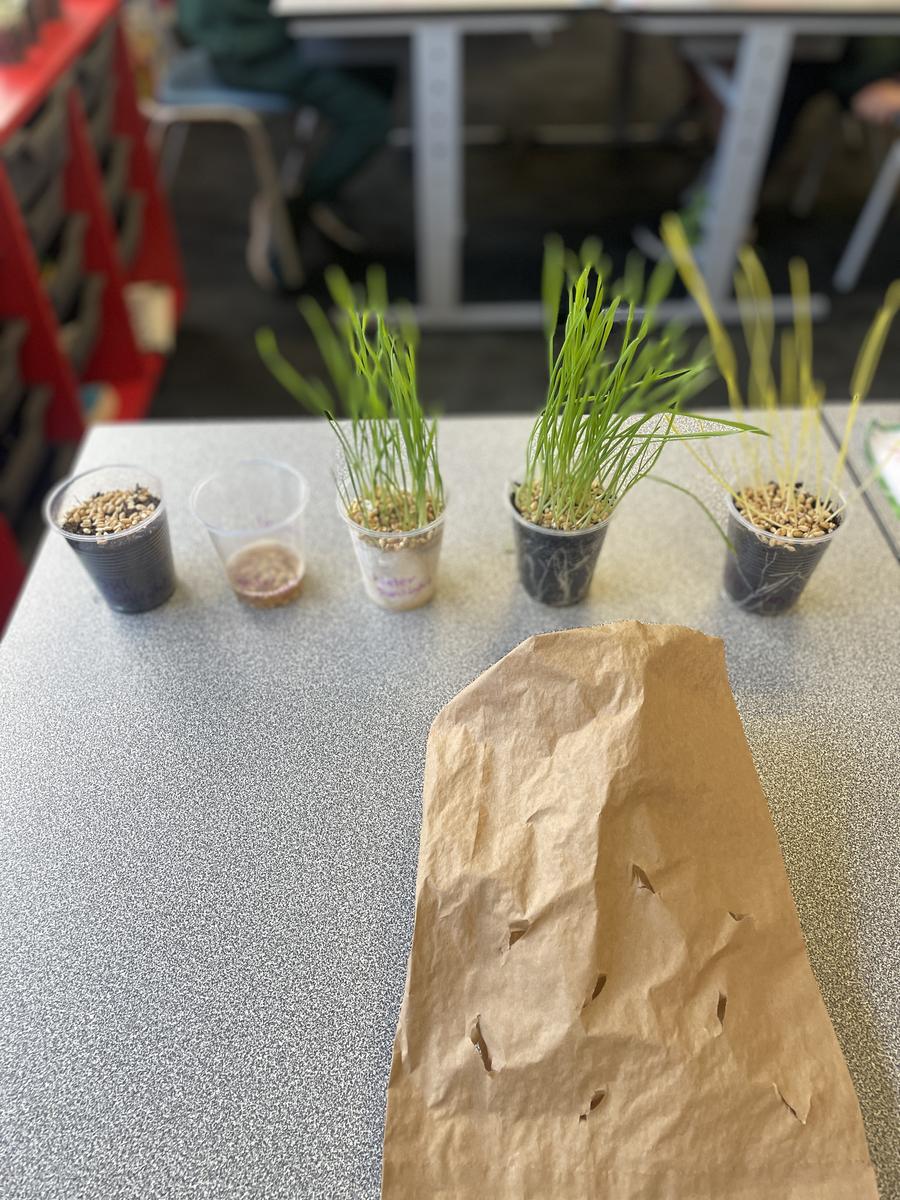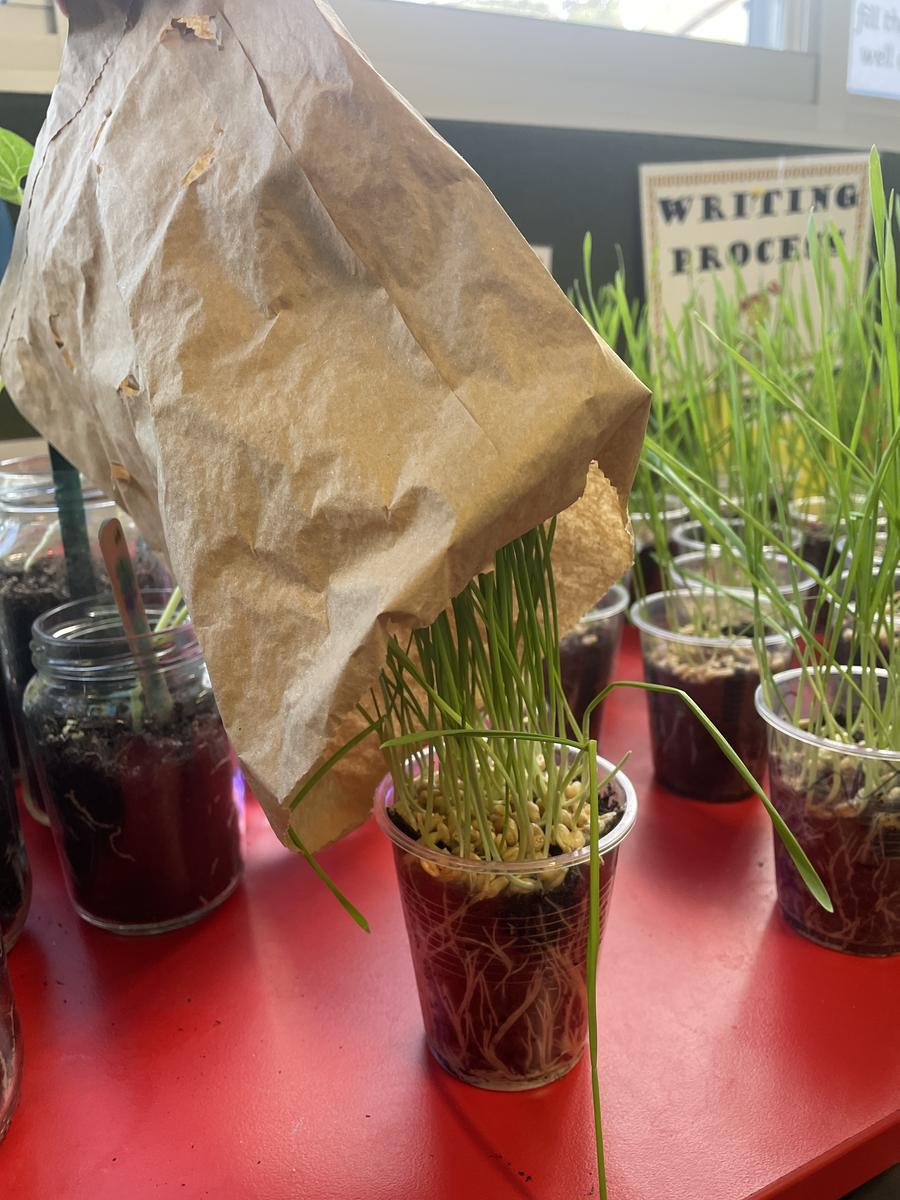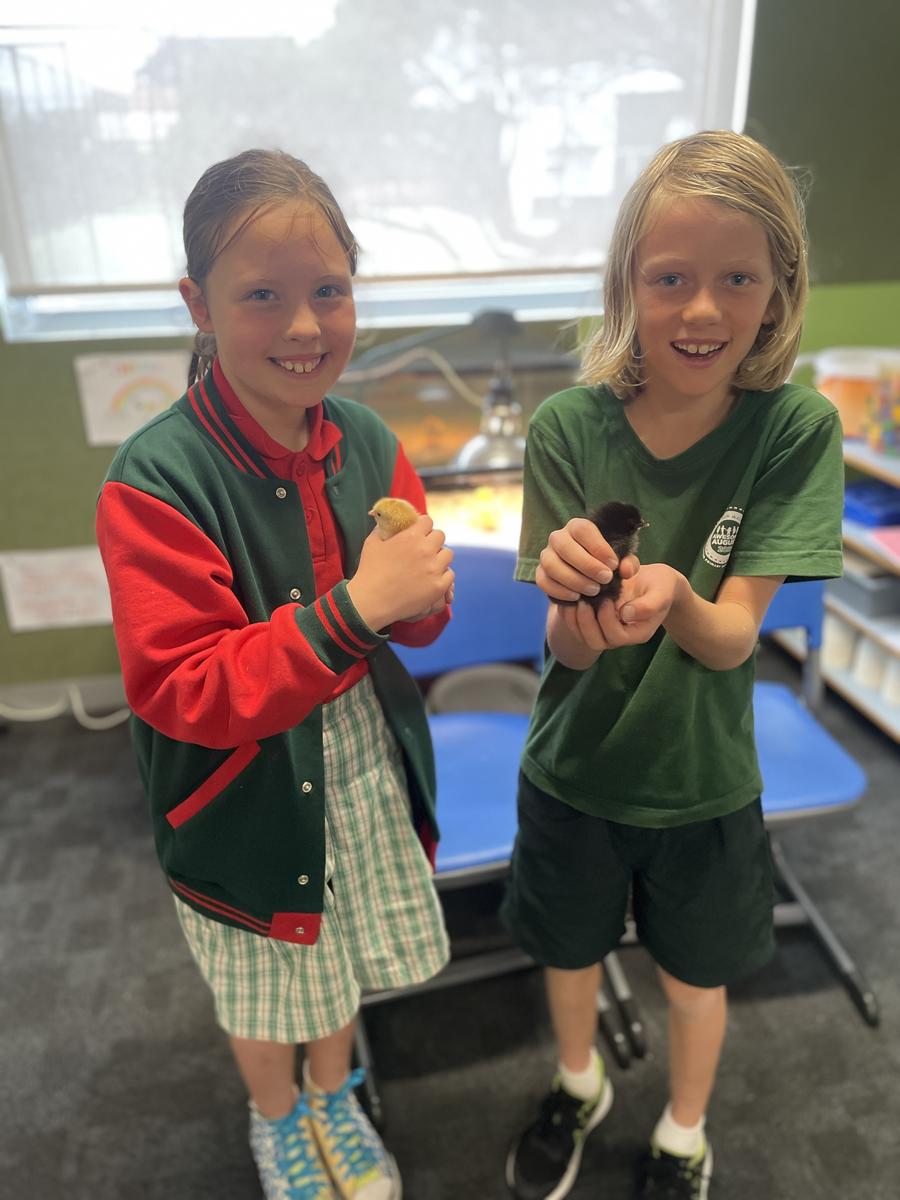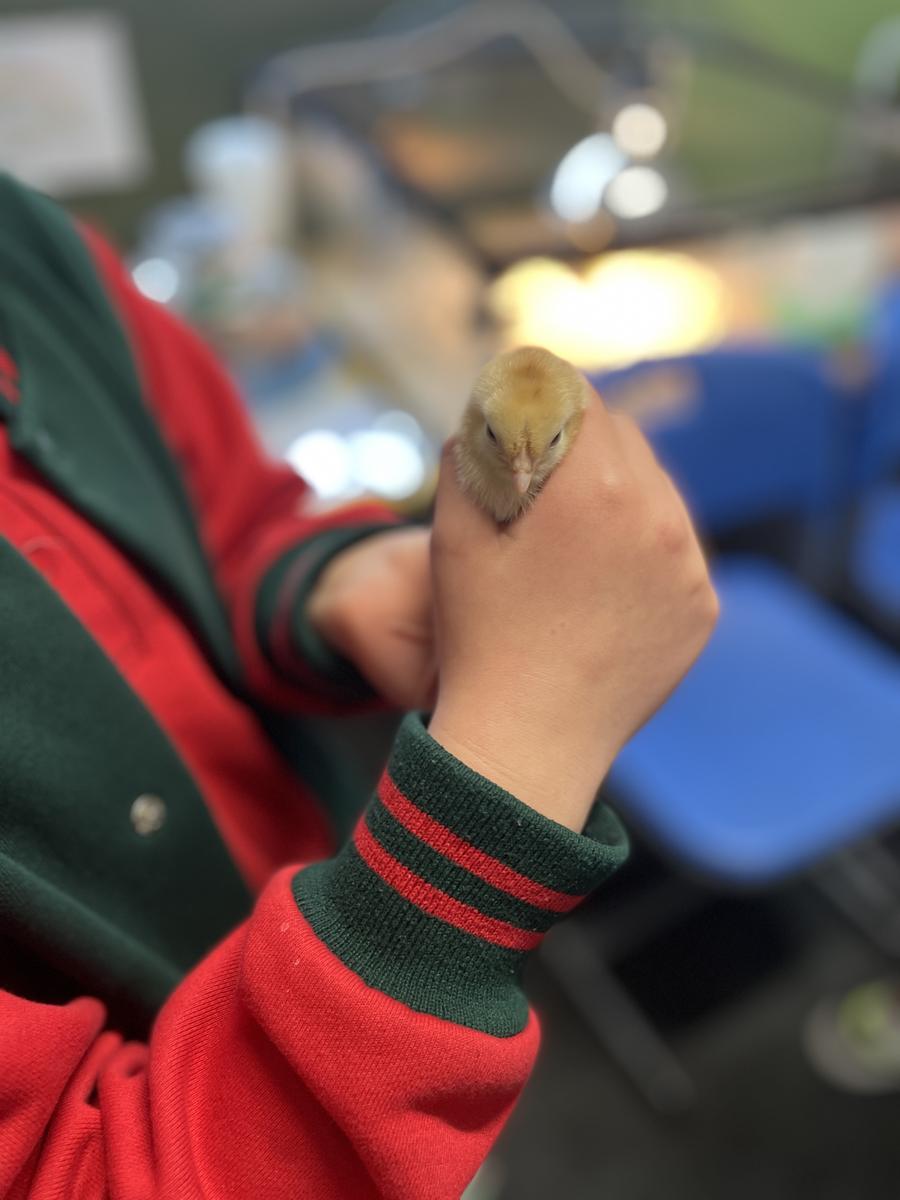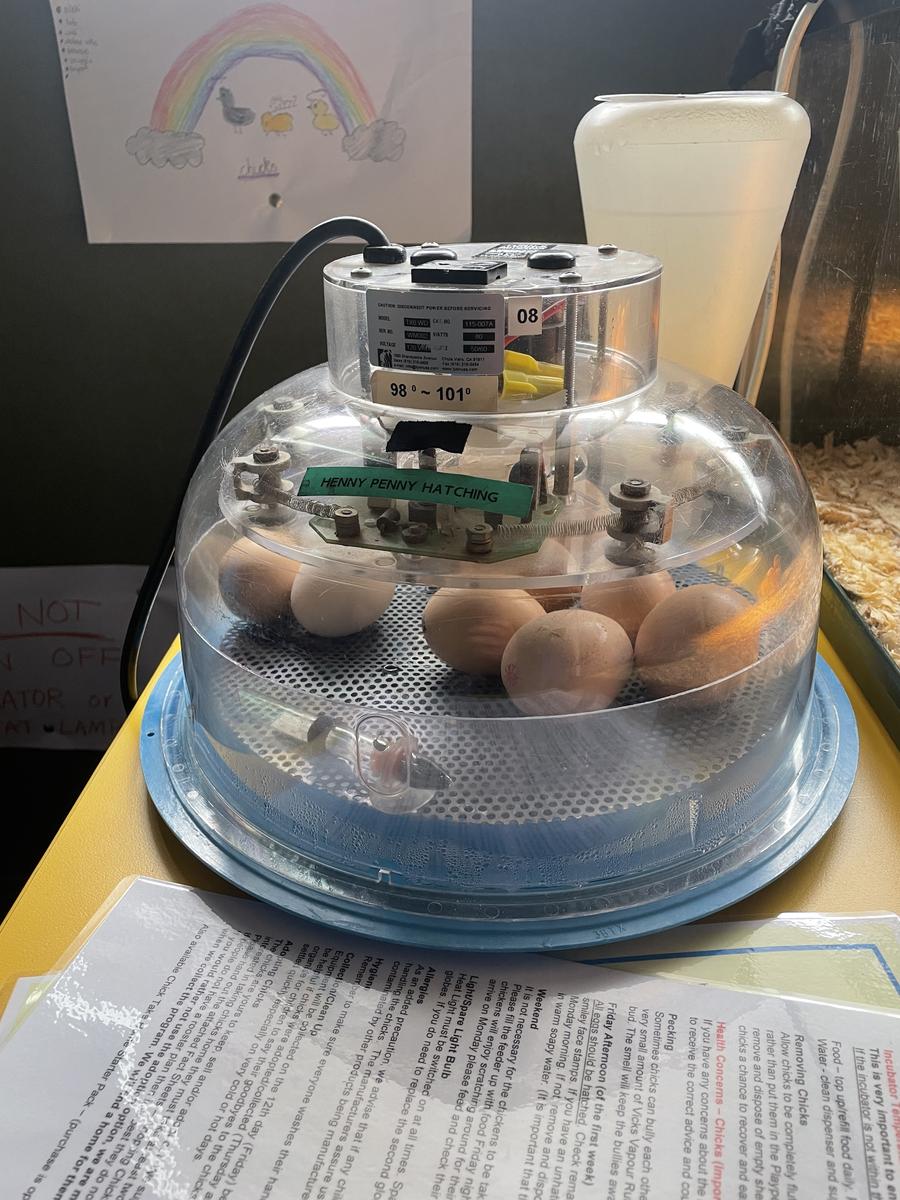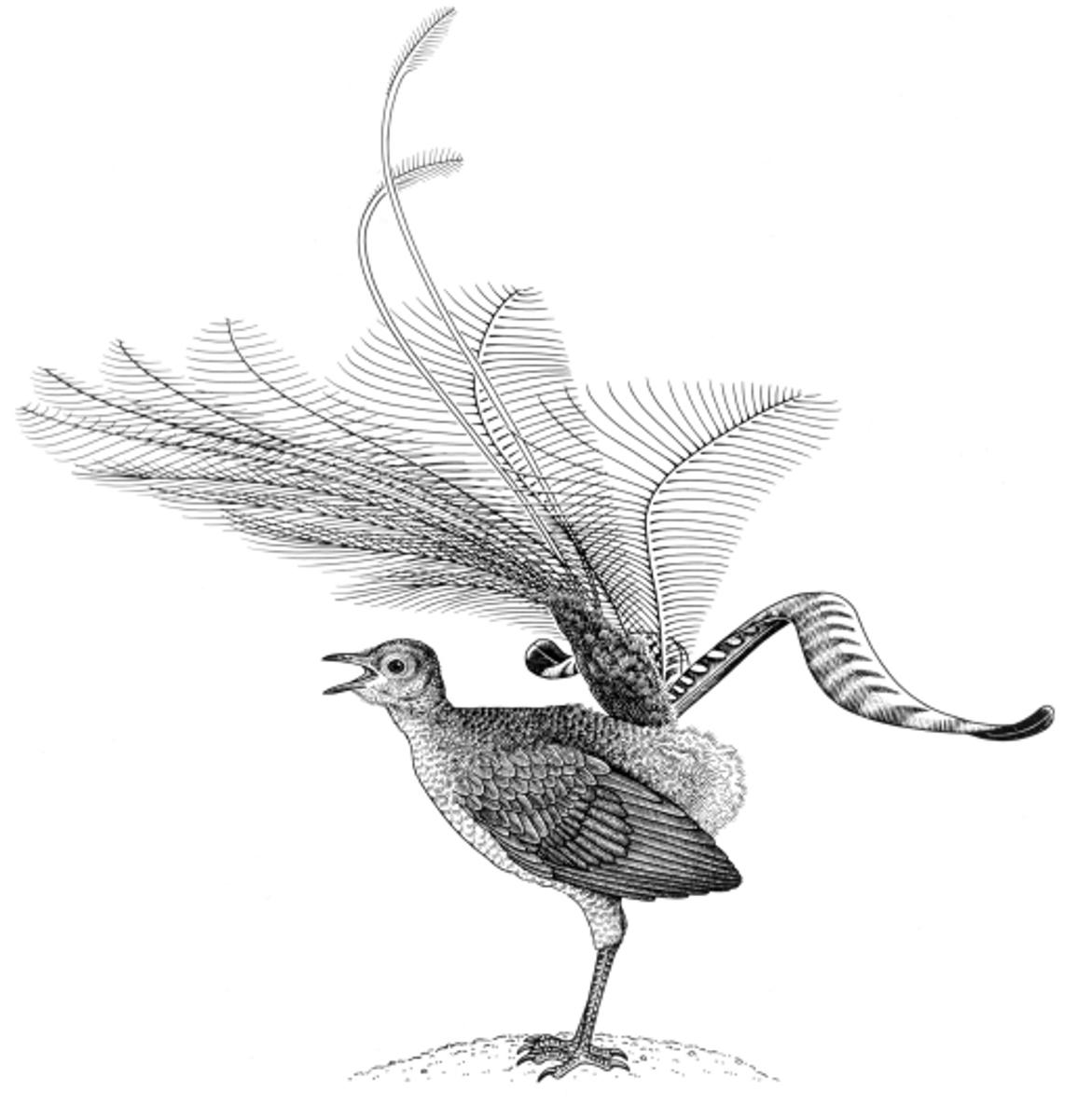Curriculum
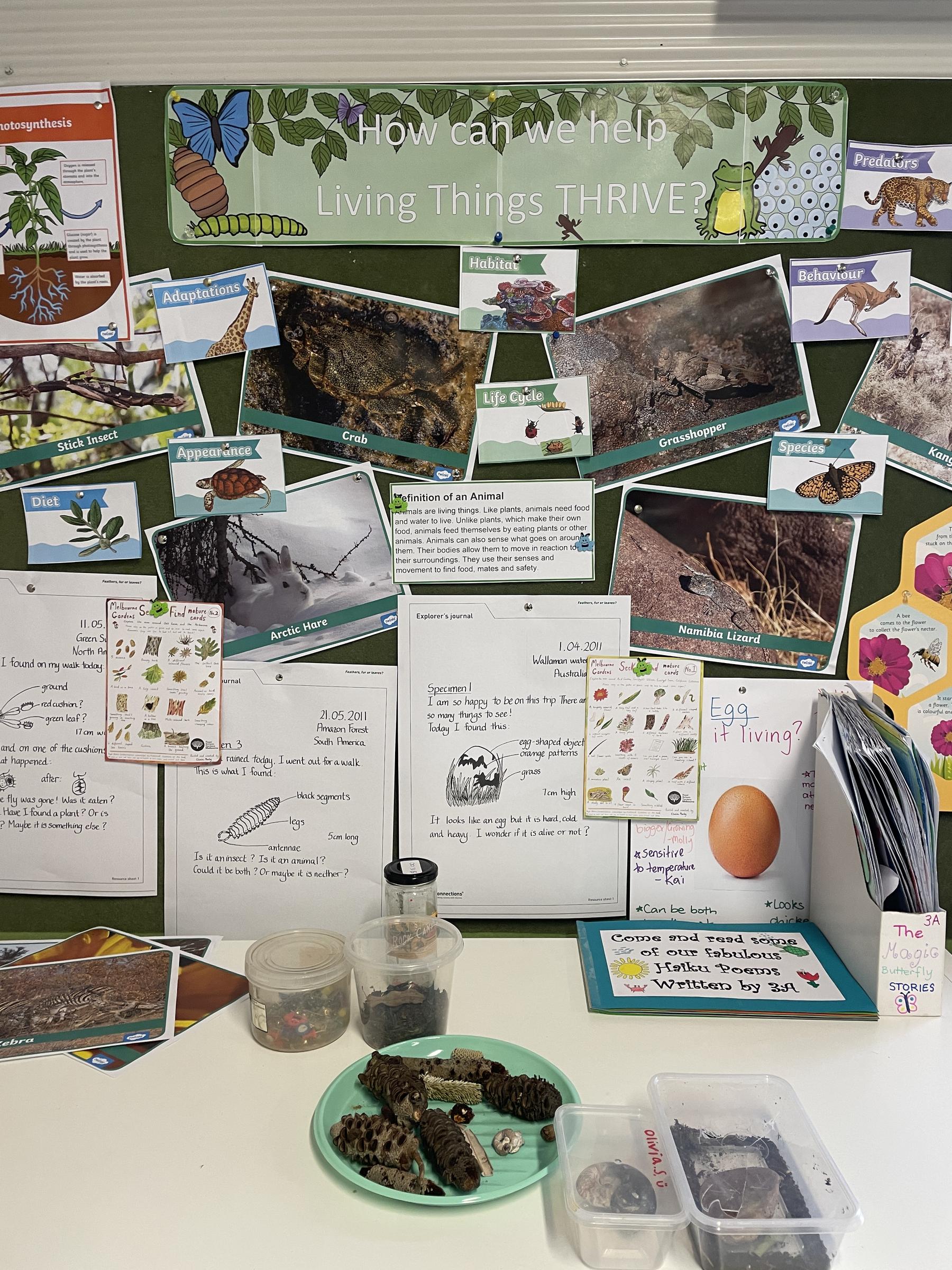
Year 3 - How can we help living things thrive?
Our Year 3 Scientists have spent Term 3 investigating the ways in which we can help living things thrive. This engaging unit of inquiry has provided opportunities for the students to explore features of living things, and ways they can be grouped together. Through hands-on activities and experiments, they've explored how living things can be grouped on the basis of observable features and how different environmental conditions can affect their survival.
Here are a couple of the highlights so far...
Wheat Grass Experiment
Targeting the development of scientific inquiry skills such as questioning, predicting, recording and evaluating, the students were tasked with the job of planting wheat grass seeds under the following conditions:
- Control – regular growing conditions (sunlight, soil, water)
- No soil (on cotton wool)
- No soil (in water)
- No water
- No sunlight
- Minimal sunlight (through holes in a paper bag)
Hatching Chickens
The students had hands-on experience as they analysed the life cycle of a chicken and compared it with other living things.
Learn: Poorneet Tadpole Season (September-October)
We know September as the start of Spring but it also marks the beginning of a new season on the Eastern Kulin Seasonal Calendar. The Kulin have a detailed local understanding of the seasons and the environment. Each season is marked by the movement of the stars in the night sky and changes in the weather, coinciding with the life cycles of plants and animals.
The traditional owners of the land noticed the following during this time:
Temperatures are rising but the rain continues. Flax-lilies are flowering.
'You get a frog and tie his back legs and then put a great big cod hook . . . And you'd have to put a weight. Otherwise you'd see the frog back on the log . . . You'd catch a codfish that way.' Martha Wandin Nevin, 1969
Pied Currawongs call loudly and often.
The flowering of plants such as Myrnong, (Yam Daisy), indicates the tubers are ready for eating.
Bulen-bulen (Superb Lyrebird) males have finished displaying.
Days and nights are of equal length.
https://museumsvictoria.com.au/melbournemuseum/resources/forest-secrets/
Timothy Bernau | Assistant Principal

